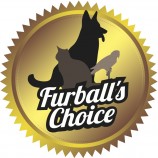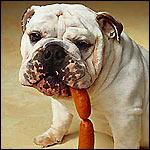Let me educate you so you can spot these con artists!
Trust me when I tell you, they are hard to spot and they are also very local. They make on average over $200,000.00 a year on profit breeding and other than the basic needs being met like food and shelter $0.00 is going towards those animals! This I can promise you, I have seen them with my own two eyes! They spend a lot of money on smoke and mirrors to deceive the general public and are very successful at it if you don’t know what questions to ask or things to look for! I am not attacking any of the breeders who are following the guidelines and truly have the dog’s best interest and welfare in mind and who stand behind their dogs! I am actually in your corner and in a roundabout way we are on the same side! I am simply trying to stop the need to buy puppies from the “bad guys” if the need to purchase from them goes away, then the need to breed them goes away too! If we stop the puppy for profit demand then the health and welfare of these animals improves! It has too! It’s that simple! It’s the supply and demand logic! Every time you adopt from a rescue, shelter, foster home you shut down the demand ONE DOG AT A TIME! That’s all we are trying to do with the rrruffstart program!
We want to educate the public on all aspects of rescuing these dogs and help in every way possible so that the dog you rescue NEVER returns to the system! We cannot do this on our own; this is where you come in! We need donations!! We need money, product, services, people, time; we need help in any and all ways! I am currently working with a few companies locally who are willing to donate services such as: local vets who will sign the rrruffstart pledge to offer veterinary care at a discounted rate for the dogs in the program to help offset the costs of keeping these dogs. I have a company that will offer dog walking services and babysitting
(Fur balls Choice) at a discount to again help offset your costs. I recently became a dog food distributor so I can help you feed these dogs a very healthy diet without having to remortgage your houses! I can sell it to you at COST! I personally will be offering support by email and phone for free! to help answer any questions or concerns you may have that are non-emergencies and to keep you off public animal sites like the ones on Facebook Belleville area and pets, I also will be offering my training and boarding services at a discounted price to again offset the costs of these guys and giving the new owners ZERO reason to give up!
Rrruffstart is still in the very beginning stages of the program, we have done lots in the past year and we still have a lot to do before it is fully up and running where I can call it 100% successful. The more help and donations we receive the faster it will be up and running! The animals are in crisis and we humans put them there so now it’s up to us humans to do all we can! I am doing all I can to play my part in rehabilitating and re-homing some great animals are you willing to do your part? I personally will be letting people know who helped make this happen so they realize it does take a village to raise a dog! I will continue to fight and ask for donations, I will publicly share who has helped make this happen, I won’t stop until I know we have made a positive change.








